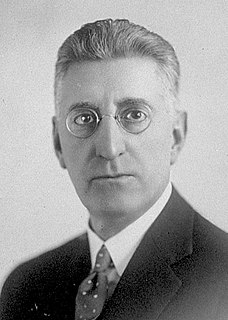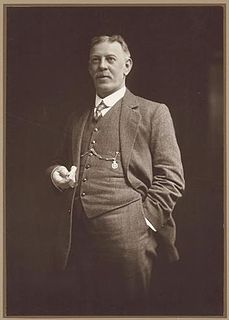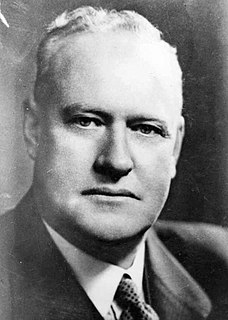Related Research Articles
The National Party of Australia (NPA), also known as The Nationals or The Nats, is an Australian political party. Traditionally representing graziers, farmers, and regional voters generally, it began as the Australian Country Party (ACP) in 1920 at a federal level. It later adopted the name National Country Party in 1975, before taking its current name in 1982.

George Richard Torbay, an Australian politician, was an independent member of the New South Wales Legislative Assembly representing Northern Tablelands from 1999 to 2013. Torbay was the 30th Speaker of the New South Wales Legislative Assembly, serving from 2007 until 2011, and was the first independent member to be Speaker of the House since 1913. Prior to his election to State parliament, he served as Mayor of Armidale City Council from 1995 to 1998.

Elections for the 54th Parliament of New South Wales were held on Saturday, 24 March 2007. The entire Legislative Assembly and half of the Legislative Council was up for election. The Labor Party led by Morris Iemma won a fourth four-year term against the Liberal-National coalition led by Peter Debnam.

Drummoyne is an electoral district of the Legislative Assembly in the Australian state of New South Wales. It is represented by John Sidoti. Originally elected as a member of the Liberal Party; Sidoti stood down from the party in 2021 whilst under investigation by the Independent Commission Against Corruption

Reginald Walter Darcy Weaver was an Australian conservative parliamentarian who served in the New South Wales Legislative Assembly for 28 years. Serving from 1917 in the backbenches, he entered the cabinet of Thomas Bavin in 1929 as Secretary for Mines and Minister for Forests until he returned to opposition in 1930. Following the success of the United Australia Party in the 1932 election, Weaver returned as the Secretary for Public Works and Minister for Health in the Stevens ministry.
Members of the New South Wales Legislative Assembly who served in the 43rd parliament held their seats from 1971 to 1973. They were elected at the 1971 state election, and at by-elections. The Speaker was Sir Kevin Ellis.</ref>

Robert Patten was an English-born Australian politician. He was a member of the New South Wales Legislative Council from 1908 to 1910 and a Commonwealth Liberal Party member of the Australian House of Representatives for the electorate of Hume from 1913 to 1917.
Members of the New South Wales Legislative Assembly who served in the 39th parliament held their seats from 1959 to 1962. They were elected at the 1959 state election, and at by-elections. The Speaker was Ray Maher.</ref>
Members of the New South Wales Legislative Assembly who served in the 35th parliament held their seats from 1947 to 1950. They were elected at the 1947 state election, and at by-elections. The Speaker was Bill Lamb.</ref>
Members of the New South Wales Legislative Assembly who served in the 34th parliament held their seats from 1944 to 1947. They were elected at the 1944 state election, and at by-elections. The opposition Democratic Party merged into the nascent Liberal Party in late 1944, becoming the New South Wales branch of the new party. The Speaker was Daniel Clyne.</ref>
Members of the New South Wales Legislative Assembly who served in the 23rd parliament of New South Wales held their seats from 1913 to 1917. They were elected at the 1913 state election on 6 December 1913.</ref> The Speaker was Richard Meagher.
Members of the New South Wales Legislative Assembly who served in the 22nd parliament of New South Wales held their seats from 1910 to 1913. They were elected at the 1910 state election on 14 October 1910.</ref> The Speakers were John Cann, Henry Willis and Henry Morton 22 July 1913 – 22 December 1913.

The 1950 New South Wales state election was held on 17 June 1950. It was conducted in single member constituencies with compulsory preferential voting and was held on boundaries created at a 1949 redistribution. The election was for all of the 94 seats in the Legislative Assembly, which was an increase of 4 seats since the previous election.
The Commonwealth Party was a short-lived, urban, conservative political party in New South Wales between May 1943 and January 1944.

The 1947 New South Wales state election was held on 3 May 1947. It was conducted in single member constituencies with compulsory preferential voting and was held on boundaries created at a 1940 redistribution. The election was for all of the 90 seats in the Legislative Assembly.
Richard Atkinson Price was an Irish-born Australian politician.

The 1917 New South Wales state election was held on 24 March 1917. This election was for all of the 90 seats in the 24th New South Wales Legislative Assembly and it was conducted in single-member constituencies with a second ballot if a majority was not achieved on the first. The 23rd parliament of New South Wales was dissolved on 21 February 1917 by the Governor, Sir Gerald Strickland, on the advice of the Premier William Holman.

The 1913 New South Wales state election was held on 6 December 1913. This election was for all of the 90 seats in the 23rd New South Wales Legislative Assembly and it was conducted in single-member constituencies with a second ballot if a majority was not achieved on the first. The 22nd parliament of New South Wales was dissolved on 6 November 1913 by the Governor, Sir Gerald Strickland, on the advice of the Premier William Holman.

The 1910 New South Wales state election was held on 14 October 1910 for all of the 90 seats in the 22nd New South Wales Legislative Assembly and it was conducted in single-member constituencies with a second ballot if a majority was not achieved on the first. Both adult males and females were entitled to vote, but not Indigenous people. The 21st parliament of New South Wales was dissolved on 14 September 1910 by the Governor, Lord Chelmsford, on the advice of the Premier Charles Wade.
References
- ↑ Smith, Rodney (2006). Against the Machines: Minor Parties and Independents in New South Wales, 1910–2006. Federation Press. p. 28. ISBN 9781862876231.